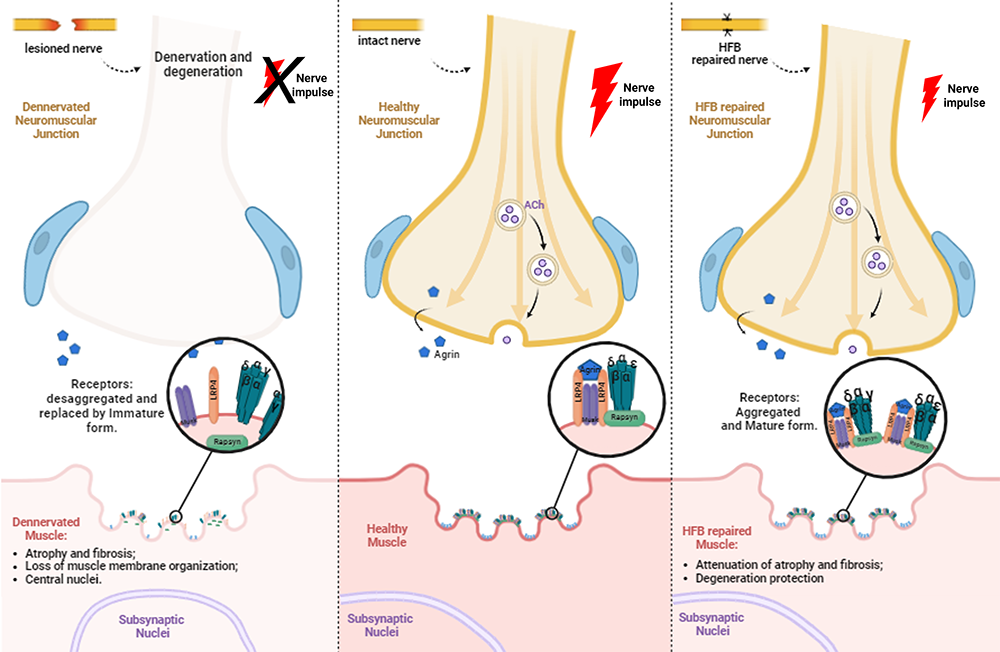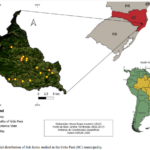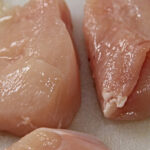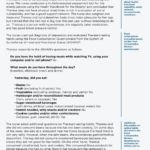Kevin Silva Muller, Msc candidate, Institute of Biosciences of Botucatu, UNESP, Botucatu, Brazil.
Selma Maria Michelin Matheus, Associate Professor, Institute of Biosciences of Botucatu, UNESP, Botucatu, Brazil.
A recent study conducted by Brazilian researchers explored a new approach to repairing peripheral nerve injuries. Analyzing the effects of Heterologous Fibrin Biopolymer on injuries to the sciatic nerve in rats, the review suggests potential advances in nerve regeneration and restoration of neuromuscular junctions through the use of this substance.
Peripheral nerves are delicate and fragile structures that can be easily damaged by injuries such as compressions, cuts, and crushes [1]. Nerve injuries are a common clinical condition, with a high global prevalence and incidence, affecting approximately 18 individuals per 100,000 each year [2]. Many people affected by nerve injuries, whether severe or moderate, experience incomplete recovery. This causes significant loss of motor and sensory functions, along with chronic pain, muscle atrophy, and weakness, significantly impacting their quality of life [3]. In recent years, scientists have explored numerous approaches to restore functionality to injured nerves [4]. To understand the biology of nerve injuries and propose therapeutic strategies, researchers often use rodents to perform surgical lesions on facial, ulnar, or sciatic nerves.

Imagem: MULLER et al. (2024).
Figure 1. Cellular and molecular events associated with muscle denervation and repair at the neuromuscular junction level. (A) Denervated, (B) healthy and (C) HFB repaired neuromuscular junction and associated muscle. After nerve injury, all components of the NMJ are affected, and relevant proteins responsible for structure and organization become disassembled. The association with HFB has demonstrated an improvement in relation to the organization of these proteins and overall muscle organization.
The article Heterologous fibrin biopolymer as an emerging approach to peripheral nerve repair: a scoping review, published in the Journal of Venomous Animals and Toxins including Tropical Diseases (vol. 30, 2024), presents the review of a series of studies investigating the effects of the association of heterologous fibrin biopolymer (HFB) with neurorrhaphy to treat nerve injuries in rats. Following the injury, nerve endings that formed neuromuscular junctions (NMJs) are lost, and even with successful reconnection the failure of reinnervation limits muscle function recovery [1]. The NMJs re-establishment is crucial to translate the central stimulus to the nerve-muscle tissue targets and develop coordinated movement.
The HFB is an entirely Brazilian biopharmaceutical, consisting of a thrombin-like enzyme extracted from rattlesnake venom and fibrinogen from buffalo blood. It is a unique heterologous fibrin sealant worldwide, as it does not use human blood, and does not transmit infectious diseases. In addition, it is a natural, biodegradable, bioabsorbable, and non-toxic biopharmaceutical with excellent adhesive capacity, and can be used in several surgical procedures [5]. The use of HFB as an adjunct in peripheral and central nerve reconstruction has been showing promising results through the development of a faster immune response and neuroprotective environment at the injury site [6-9]. Further, its use has already been experimentally shown to provide a microenvironment of stability and protection at the reconstruction site, leading to positive scenarios of NMJs regeneration.
Figure 2. The association of the heterologous fibrin biopolymer with neurorrhaphy emerges as a potential avenue for improving the regeneration after nerve reconstruction, by mitigating degeneration in nerves, muscles, and NMJs post-injury in experimental studies.
HFB provides a more conducive regenerative environment for nerves, muscles, and associated NMJs compared to sutures alone and has several advantages in relation to suture alone and to other fibrin sealants. These findings represent a significant advancement in the field of peripheral nerve repair and offer hope for the development of new therapeutic approaches for nerve injuries. The article highlights the importance of HFB as a viable and promising adjunct for peripheral nerve repair, and suggests that further research is needed to determine its long-term use and clinical benefits for humans.
The study was carried out by Kevin Silva Muller who, during his master project, is currently investigating the late regeneration effects of nerve reconstruction via neurorrhaphy associated with HFB after injury and repair of the sciatic nerve of Wistar rats, addressing aspects of the peripheral and central nervous system. Selma Maria Michelin Matheus, a scientific researcher at the Institute of Biosciences of Botucatu, UNESP, is supervising the project and has been conducting research related to the use of HFB for nerve repair for several years. Currently, the group aims to understand the biology of the NMJs and their interaction with nerve and muscle in health and disease, shedding light to the relevance and essentiality of this structure for the development of a coordinated movement and being alive.
References
- HUSSAIN, G., et al. Current Status of Therapeutic Approaches against Peripheral Nerve Injuries: A Detailed Story from Injury to Recovery. Int. J. Biol. Sci [online]. 2020, vol. 16, no. 1, pp. 116-34 [viewed 05 May 2024]. https://doi.org/10.7150/ijbs.35653. Available from: https://www.ijbs.com/v16p0116.htm
- JONES, S., EISENBERG. H.M. and JIA, X. Advances and Future Applications of Augmented Peripheral Nerve Regeneration. Int. J. Mol. Sci [online]. 2016, vol. 17, no. 9 [viewed 05 May 2024]. https://doi.org/10.3390/ijms17091494. Available from: https://www.mdpi.com/1422-0067/17/9/1494
- WANG, M.L., et al. Peripheral nerve injury, scarring, and recovery. Connect Tissue Res [online]. 2019, vol. 60, no. 1, pp. 3-9 [viewed 05 May 2024]. https://doi.org/10.1080/03008207.2018.1489381. Available from: https://pubmed.ncbi.nlm.nih.gov/30187777/
- RAY, W.Z. and MACKINNON, S.E. Management of nerve gaps: autografts, allografts, nerve transfers, and end-to-side neurorrhaphy. Exp. Neurol [online]. 2010, vol. 223, no. 1, pp. 77-85 [viewed 05 May 2024]. https://doi.org/10.1016%2Fj.expneurol.2009.03.031. Available from: https://www.ncbi.nlm.nih.gov/pmc/articles/PMC2849924/
- BARROS, L.C., et al. A new fibrin sealant from Crotalus durissus terrificus venom: applications in medicine. J. Toxicol Environ. Health B. Crit. Rev [online]. 2009, vol. 12, no. 8, pp. 553-571 [viewed 05 May 2024]. https://doi.org/10.1080/10937400903442514. Available from: https://pubmed.ncbi.nlm.nih.gov/20183534/
- LEITE, A.P.S., et al. Acetylcholine receptors of the neuromuscular junctions present normal distribution after peripheral nerve injury and repair through nerve guidance associated with fibrin biopolymer. Injury [online]. 2023, vol. 54, no. 2, pp. 345-61 [viewed 05 May 2024]. https://doi.org/10.1016/j.injury.2022.11.047. Available from: https://pubmed.ncbi.nlm.nih.gov/36446670/
- BISCOLA, N.P., et al. Multiple uses of fibrin sealant for nervous system treatment following injury and disease. J. Venom. Anim. Toxins incl. Trop. Dis [online]. 2017, vol. 23, pp. 13 [viewed 05 May 2024]. https://doi.org/10.1186/s40409-017-0103-1. Available from: https://jvat.biomedcentral.com/articles/10.1186/s40409-017-0103-1
- BARBIZAN, R., et al. Motor recovery and synaptic preservation after ventral root avulsion and repair with a fibrin sealant derived from snake venom. PLoS One. 2013, vol. 8, no. 5, e63260 [viewed 05 May 2024]. https://doi.org/10.1371/journal.pone.0063260. Available from: https://pubmed.ncbi.nlm.nih.gov/23667596/
- TIBÚRCIO, F.C., et al. Neuroregeneration and immune response after neurorrhaphy are improved with the use of heterologous fibrin biopolymer in addition to suture repair alone. Muscle Nerve [online]. 2023, vol. 67, no. 6, pp. 522-536 [viewed 05 May 2024]. https://doi.org/10.1002/mus.27815. Available from: https://pubmed.ncbi.nlm.nih.gov/36905197/
To read the article, access
MULLER, K.S., et al. Heterologous fibrin biopolymer as an emerging approach to peripheral nerve repair: a scoping review. J. Venom. Anim. Toxins Incl. Trop. Dis [online]. 2024, vol. 15, no. 30, e20230060 [viewed 05 May 2024]. https://doi.org/10.1590/1678-9199-JVATITD-2023-0060. Available from: https://www.scielo.br/j/jvatitd/a/jbTRqWKqhVZTPK5WmyvzWKG/
External links
Journal of Venomous Animals and Toxins including Tropical Diseases – SciELO: http://www.scielo.br/jvatitd
Journal of Venomous Animals and Toxins including Tropical Diseases http://www.jvat.org/
Journal of Venomous Animals and Toxins including Tropical Diseases – Social Media: Twitter | Facebook
Kevin Silva Muller – Profiles: Instagram | Lattes | Research Gate
Instituto de Biociências de Botucatu – Website: https://www.ibb.unesp.br/
Como citar este post [ISO 690/2010]:




















Recent Comments